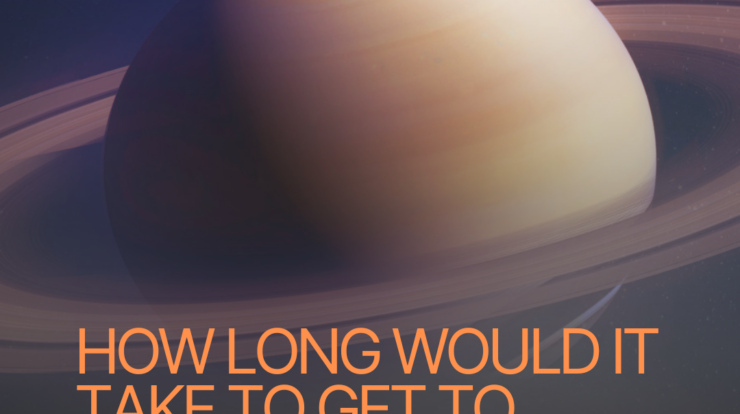
How Long Would it Take to Get to saturn
Introduction
The fascination with Saturn
Saturn, with its stunning rings and enigmatic allure, has captivated the imagination of astronomers and space enthusiasts for centuries. As one of the most visually striking planets in our Solar System, it beckons us to explore its mysteries.
The complexities of space travel
Embarking on a journey to Saturn is no small feat. This article will delve into the intricacies of reaching this distant giant, covering everything from the spacecraft used to the challenges faced by astronauts during the voyage.
Setting the Stage
Understanding Saturn’s position in the Solar System
Saturn is the sixth planet from the Sun and the second-largest in the Solar System. Its immense distance from Earth poses significant challenges for interplanetary travel.
Hurdles of interplanetary travel
Before we venture into the details of the journey, it’s essential to acknowledge the numerous hurdles that make traveling to Saturns a formidable task. These challenges range from the vast distances involved to the harsh space environment.
Proximity to Earth
Saturn’s distance from Earth
Saturn’s average distance from Earth is approximately 746 million miles (1.2 billion kilometers). However, this distance varies as both planets follow elliptical orbits around the Sun.
The role of orbits in space travel
To minimize the time and energy required for a mission to Saturn, scientists and engineers carefully plan spacecraft trajectories, taking advantage of orbital mechanics to navigate efficiently.
Types of Spacecraft
Manned missions
NASA’s Apollo program
While the Apollo program is renowned for landing humans on the Moon, it played a crucial role in developing technologies and expertise that could be applied to future missions, including those to Saturn.
Future human missions
NASA and other space agencies have proposed ambitious plans for sending astronauts to Saturn, but these missions remain in the conceptual stage.
Unmanned missions
Robotic spacecraft
The majority of missions to Saturn have been conducted using robotic spacecraft. These unmanned probes are equipped with a range of scientific instruments to study the planet and its surroundings.
Probes and orbiters
Probes and orbiters, such as the Cassini-Huygens mission, have provided invaluable data about Saturn’s atmosphere, rings, and moons.
Speed and Trajectory
Escape velocity
Achieving escape velocity from Earth’s gravitational pull is a critical milestone for any spacecraft destined for Saturn.
The importance of gravity assists
Spacecraft often use gravity assists from other celestial bodies, such as Venus or Jupiter, to gain speed and reduce travel time.
Optimal trajectories
The trajectory chosen for a mission to Saturn can significantly impact its duration. Scientists meticulously calculate the most efficient paths to reach the ringed giant.
Duration of Travel
Historical missions
Historically, missions to Saturn took several years to complete due to the limited capabilities of spacecraft and propulsion systems.
Modern missions
Cassini-Huygens mission
The Cassini-Huygens mission, a joint effort between NASA and the European Space Agency (ESA), provided unprecedented insights into Saturn and its moons during its 13-year journey.
Future missions
NASA’s Dragonfly
Scheduled for launch in the near future, NASA’s Dragonfly mission will use a rotorcraft to explore Saturn’s largest moon, Titan.
ESA’s JUpiter ICy moons Explorer (JUICE)
ESA’s JUICE mission, set to launch in the coming years, will study Jupiter’s moons and their potential connection to Saturn.
Challenges on the Journey
Radiation exposure
Spacecraft traveling to Saturn must contend with high levels of radiation from the Sun and cosmic rays, which can damage sensitive equipment and pose health risks to astronauts.
Psychological effects on astronauts
The psychological toll of long-duration space travel, isolation, and confinement is a critical concern for missions to Saturn.
Technical malfunctions
The harsh conditions of space and the extended duration of the journey increase the likelihood of technical malfunctions that must be addressed remotely.
Space debris
Navigating through the debris of previous space missions and defunct satellites poses a constant threat to spacecraft en route to Saturn.
Fuel and Propulsion
Rocket propulsion systems
Chemical rockets
Most spacecraft rely on chemical rockets for propulsion, which are efficient for escaping Earth’s gravity but limited in their ability to accelerate in deep space.
Nuclear propulsion
Research into nuclear propulsion systems continues, as they have the potential to dramatically reduce travel times to Saturn and beyond.
Fuel efficiency and sustainability
Efforts are underway to develop more sustainable and efficient propulsion technologies, ensuring the long-term viability of interplanetary missions.
Communication with Earth
Deep Space Network (DSN)
The Deep Space Network, a global system of antennas, plays a crucial role in maintaining communication with spacecraft on their journey to Saturn.
Time delays in communication
Due to the vast distances involved, there can be significant time delays in sending and receiving signals between Earth and spacecraft near Saturn.
Entering Saturn’s Orbit
Slowing down for orbital insertion
As a spacecraft approaches Saturn, it must execute a series of maneuvers to slow down and be captured by the planet’s gravity.
Navigating Saturn’s rings and moons
The presence of Saturn’s iconic rings and numerous moons presents navigation challenges that must be carefully planned for.
Scientific Objectives
What we hope to discover
Scientific missions to Saturn aim to unlock the secrets of the planet’s formation, atmosphere, and unique ring system.
The importance of Saturn’s exploration
Understanding Saturn not only expands our knowledge of planetary science but also offers insights into the broader processes shaping our Solar System.
Instruments and Experiments
Payloads on spacecraft
Robotic missions to Saturn are equipped with a suite of instruments, including cameras, spectrometers, and magnetometers, to study various aspects of the planet and its moons.
Collecting data and samples
Some missions, such as Cassini-Huygens, have the capability to collect data and samples from Saturn’s environment, providing invaluable scientific data.
The Grand Finale
Cassini’s mission conclusion
The Cassini spacecraft concluded its mission with a daring dive into Saturn’s atmosphere, providing valuable data until the very end.
Disposing of spacecraft in Saturn’s atmosphere
This intentional plunge into Saturn’s atmosphere ensures that the spacecraft does not contaminate Saturn’s moons, which may harbor signs of life.
Summary of Findings
Key discoveries
Throughout its missions, scientists have made numerous groundbreaking discoveries about Saturn, its rings, and its moons.
How they impact our understanding of the universe
The knowledge gained from studying Saturns contributes to our understanding of planetary formation, the dynamics of gas giants, and the potential for life beyond Earth.
Looking Ahead
Future missions to Saturn
Several exciting missions are on the horizon, promising to build upon the discoveries of previous expeditions and further our understanding of this captivating planet.
Expanding our knowledge of the cosmos
Saturn, with its unique characteristics, continues to beckon humanity to explore the cosmos, reminding us of the endless possibilities that await us among the stars.
Frequently Asked Questions (FAQs)
How far is Saturn from Earth?
| Saturn’s Average Distance from Earth: | Approximately 746 million miles (1.2 billion kilometers) |
|---|
What is the fastest spacecraft to reach Saturn?
| Fastest Spacecraft to Reach Saturn: | Cassini-Huygens (Approximately 6.7 years) |
|---|
Are there plans for human missions to Saturn?
| Plans for Human Missions to Saturn: | Conceptual plans exist, but no specific missions are scheduled. |
|---|
How do astronauts survive the long journey?
| Survival on Long Space Journeys: | Advanced life support systems, psychological support, and rigorous training are essential. |
|---|
What did Cassini discover about Saturn’s rings?
| Cassini’s Discoveries About Saturn’s Rings: | Detailed information about ring composition, structure, and dynamics. |
|---|
What’s the next big milestone in Saturn exploration?
| Upcoming Saturn Exploration Milestones: | NASA’s Dragonfly and ESA’s JUICE missions are the next significant milestones. |
|---|
Can we ever establish a permanent presence on Saturn?
| Establishing Permanent Presence on Saturn: | Currently not feasible due to extreme environmental conditions. |
|---|
Conclusion
Reflecting on the journey
The quest to reach Saturns exemplifies humanity’s insatiable curiosity and determination to explore the cosmos.
The endless possibilities of space exploration
As we continue to push the boundaries of space exploration, Saturn remains a symbol of the infinite wonders awaiting us in the universe.






